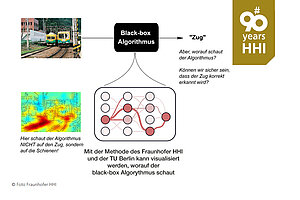June 26, 2018
2007/2017
Today, we take it for granted that smartphones can recognize the faces in our photos. Although, this development was still in its infancy in 2007, the Fraunhofer Heinrich-Hertz-Institut had already developed software for automatic image recognition at the time.
In this age of smartphones and digital cameras, it is easy to get caught up in taking photos of everything all day. Selfies, tourist sights, or visits to restaurants – our hard disks are full of snaps, some may be pretty and some may be not. The disadvantage is that once you have amassed a few hundred photos, sorting them is probably no longer much fun.
Help is needed in the form of software that can order and categorize the pictures – ideally completely automatically. In 2007, the Fraunhofer Heinrich-Hertz-Institut started developing a program that was intended to relieve photographers of picture management work. The software inspect the photos for lines and colors. This enable it to filter out photographs of the sea, forests, or mountains independently. Facial recognition was, at that time, not yet possible, however. Ten years later, research has made considerable progress. Thanks to Fraunhofer HHI researchers, a look into the black box shows us how pictures can be sorted according to the finest details.
Neural networks analysis makes it possible to comb through a large quantity of data and to search for fine structures such as faces. The only catch is that, until now, nobody was able to fully understand how neural networks really work. They can be compared to black boxes – a term that encompasses computer programs that can learn automatically and then produce reliable results. Thus, the focus of today’s research is not only on the right result being attained by the neural networks, but also on the process leading to the decision. Dr. Wojciech Samek, who heads the research group Machine Learning at Fraunhofer HHI, has, together with his colleagues and researchers from the Technical University Berlin, developed a method that gives us an insight into the thought processes of neural networks.
